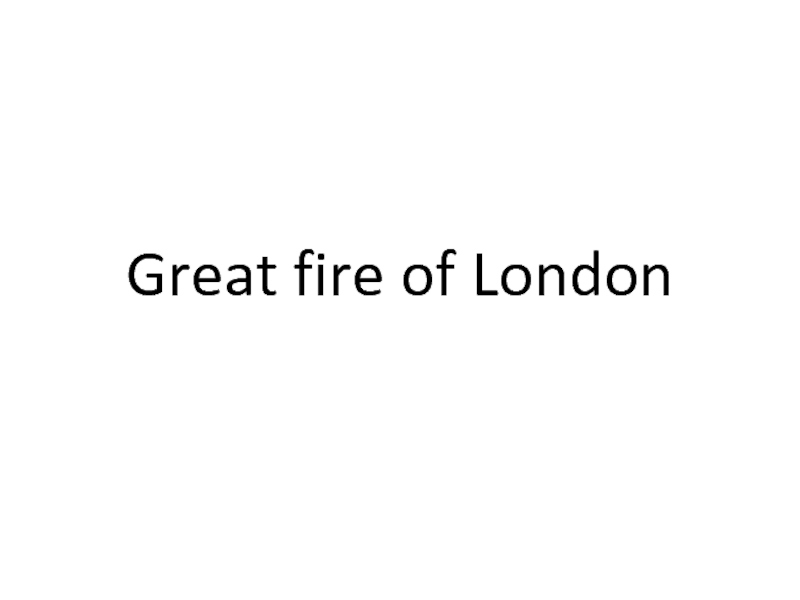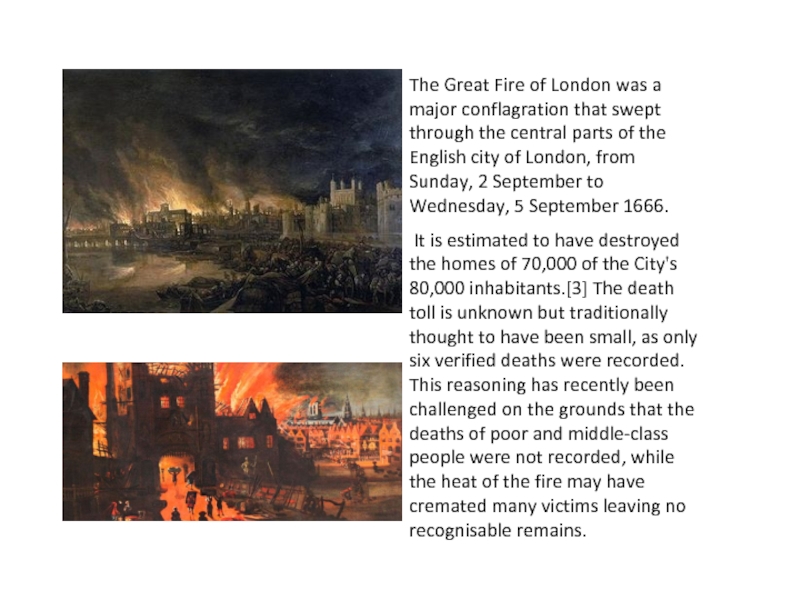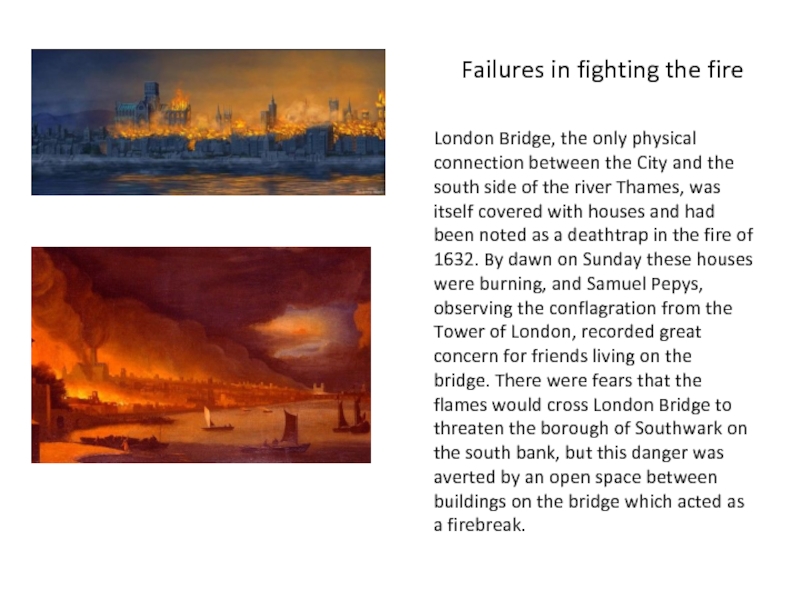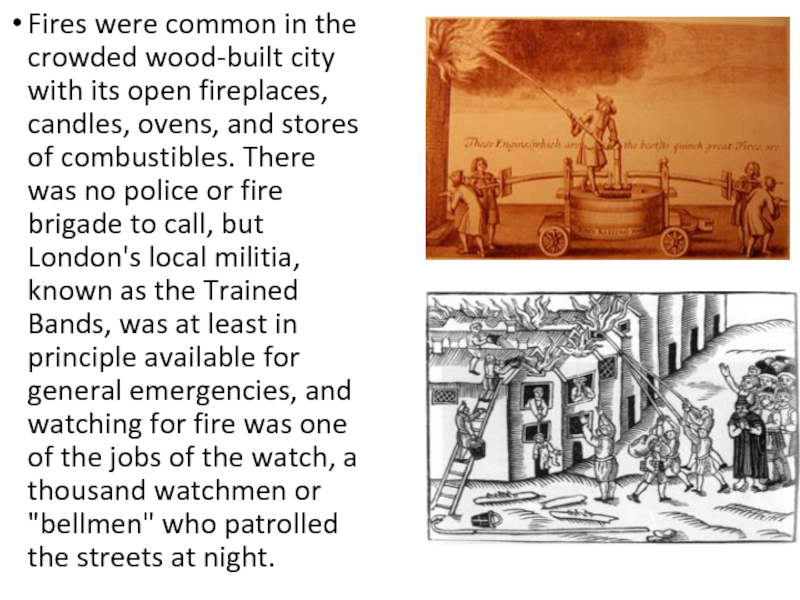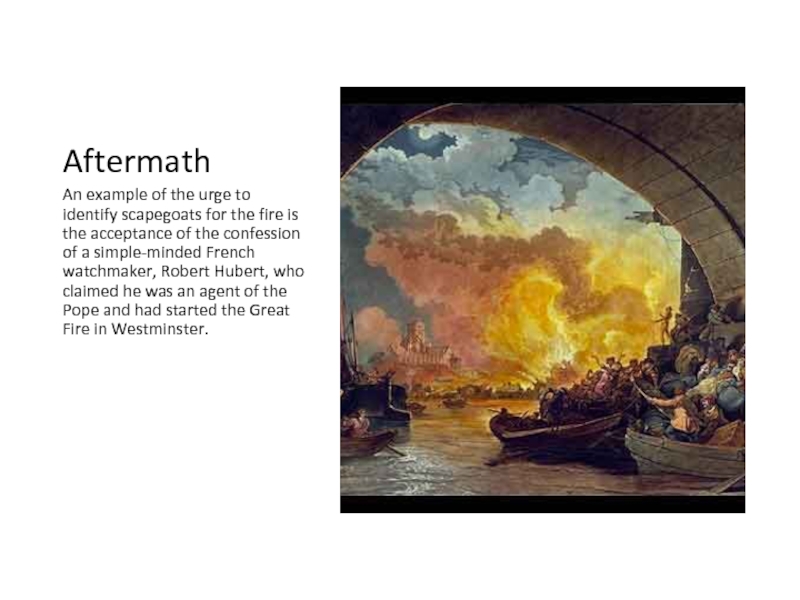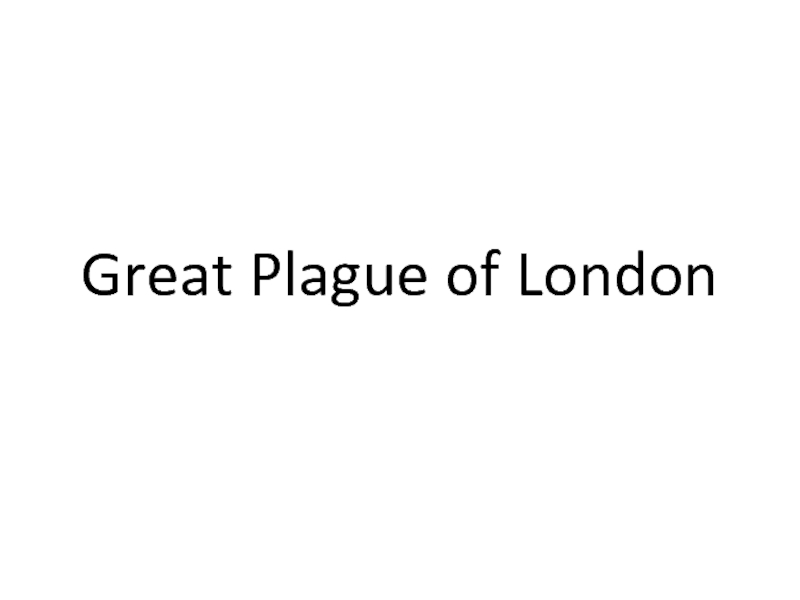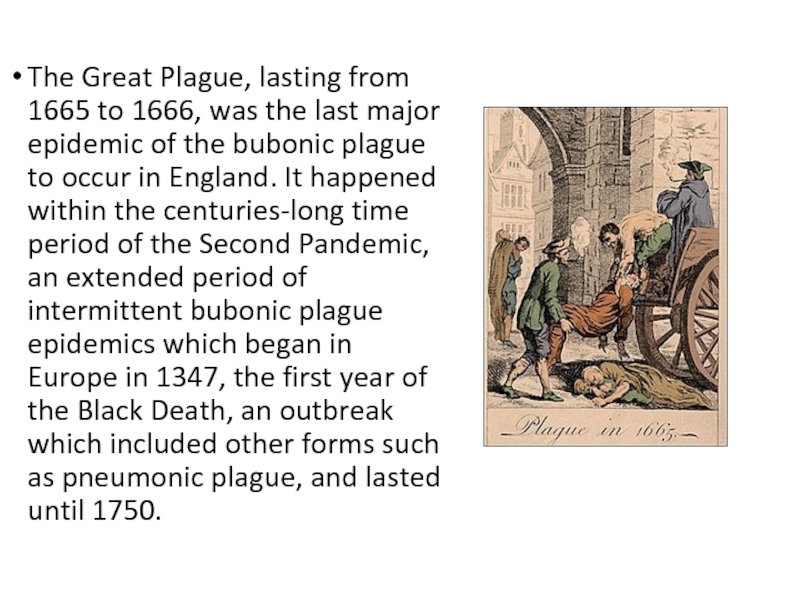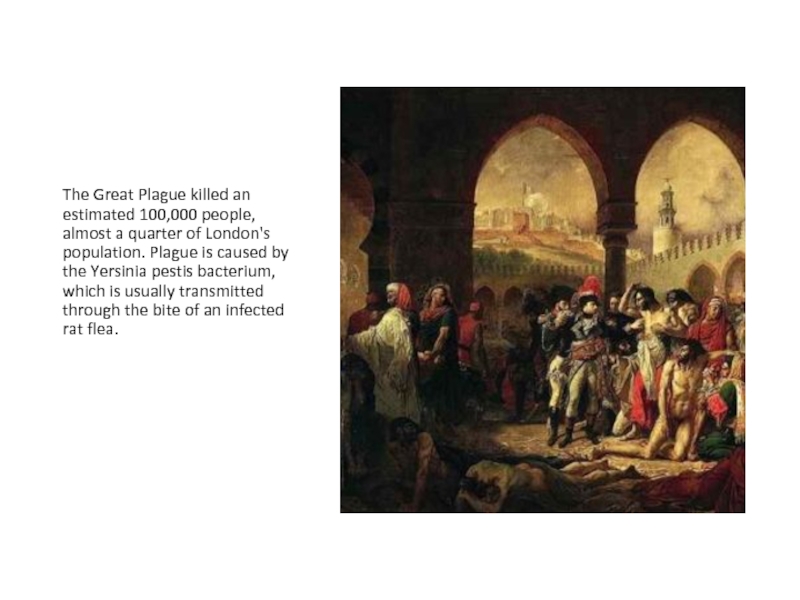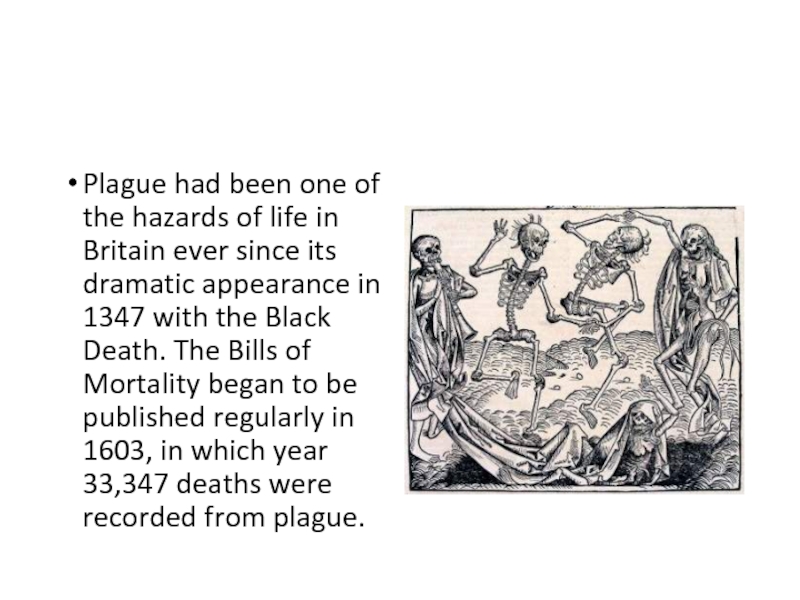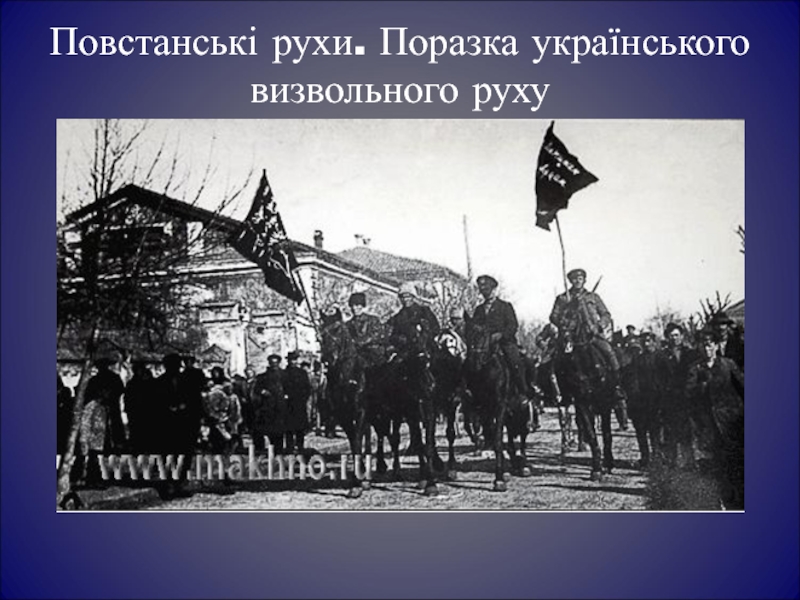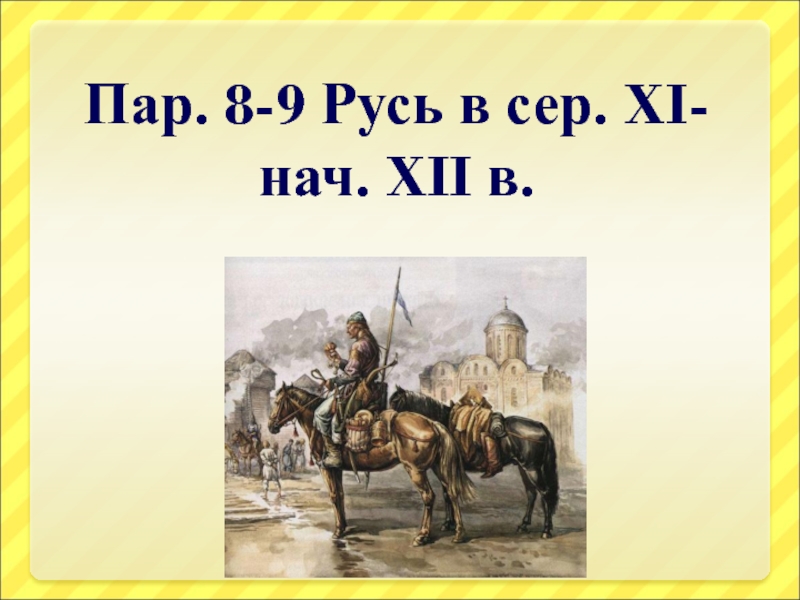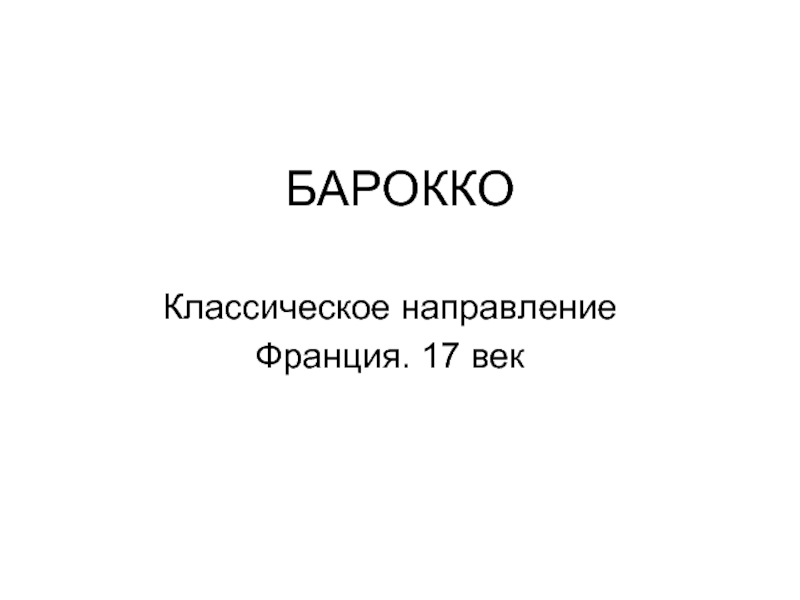- Главная
- Разное
- Дизайн
- Бизнес и предпринимательство
- Аналитика
- Образование
- Развлечения
- Красота и здоровье
- Финансы
- Государство
- Путешествия
- Спорт
- Недвижимость
- Армия
- Графика
- Культурология
- Еда и кулинария
- Лингвистика
- Английский язык
- Астрономия
- Алгебра
- Биология
- География
- Детские презентации
- Информатика
- История
- Литература
- Маркетинг
- Математика
- Медицина
- Менеджмент
- Музыка
- МХК
- Немецкий язык
- ОБЖ
- Обществознание
- Окружающий мир
- Педагогика
- Русский язык
- Технология
- Физика
- Философия
- Химия
- Шаблоны, картинки для презентаций
- Экология
- Экономика
- Юриспруденция
Great fire of London презентация
Содержание
- 1. Great fire of London
- 2. The Great Fire of London was a
- 3. Failures in fighting the fire London Bridge,
- 4. London in the 1660s By the 1660s,
- 5. Fires were common in the crowded wood-built
- 6. Aftermath An example of the urge to
- 7. Great Plague of London
- 8. The Great Plague, lasting from 1665 to
- 9. The Great Plague killed an estimated
- 10. Plague had been one of the
Слайд 2The Great Fire of London was a major conflagration that swept
It is estimated to have destroyed the homes of 70,000 of the City's 80,000 inhabitants.[3] The death toll is unknown but traditionally thought to have been small, as only six verified deaths were recorded. This reasoning has recently been challenged on the grounds that the deaths of poor and middle-class people were not recorded, while the heat of the fire may have cremated many victims leaving no recognisable remains.
